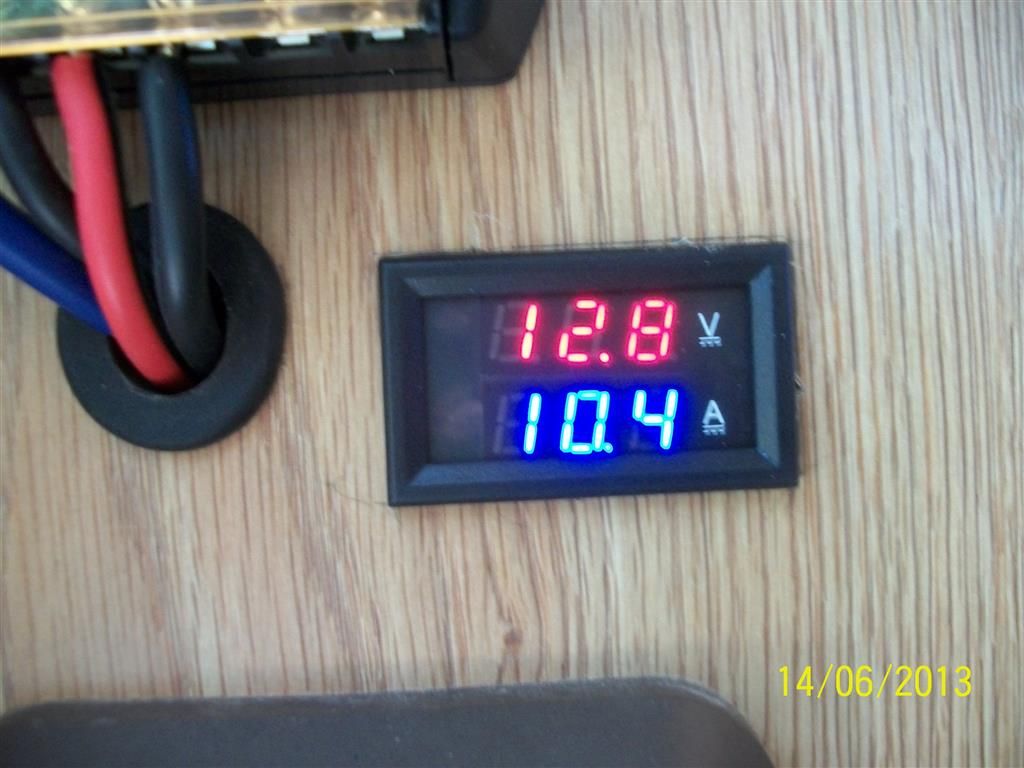Forum Discussion
- profdant139Explorer IIwestend, thanks for that link. I am embarrassed to say this, but I am really looking forward to measuring the real-time performance of my on-board charger, plotting out the results, comparing that to the stand-alone plug-in charger, and comparing that to the output of my solar panel.
I know that the results probably won't change much about how I routinely deal with my batteries, but this stuff is just interesting to me. And it could be useful. For example, if (as I suspect) TooTall's test is correct (i.e., that the stand-alone charger does a much better job of jamming in the juice than the on-board converter does), that tells me that if and when I ever need juice in a hurry, I should fire up my generator (a rare event!!) and plug in the charger. - Snowman9000ExplorerBased on my test of one WFCO converter, there is NO installation that will overcome its poor performance. I used fat 2' cables straight to the batteries, and it still stunk.
- Boon_DockerExplorer III"Kudos to the 12 amp charger in the video for bulk charging @ 17 amps. My older Schumacher 10 amp charger won't."
I have never heard of a 12 amp charger producing 17 amps in bulk mode (A 45 percent increase of the max rated output). An increase in voltage yes, but not an increase in amperage above the rated output. - Chum_leeExplorer
DanNJanice wrote:
Just curious, is anyone concerned about the high voltage output from these fast chargers? I know the smart charger that I have at home ramps up to 16V when it is charging. Is there a chance that other electronic devices could be damaged if used while charging?
In the video, if you look at the size of the battery cables and clamps coming off the portable charger, there is NO WAY they could handle 75 amps (@+-12V nominal) for more than a few seconds without overheating, hence the term "engine start or boost charge." It's designed to put substantial amps in a near dead battery short term for starting purposes, not long term bulk charging. If you have the proper power supply, you don't necessarily need excess charging voltage to quick charge a battery. Yes, excess voltage (above +-15.5V) can damage 12V electronics and resistance type electrical consumers. Typically equalization is a low amp, higher voltage process not meant to be used for bulk charging. Kudos to the 12 amp charger in the video for bulk charging @ 17 amps. My older Schumacher 10 amp charger won't. The circuit breaker trips in a few minutes at anything above 9 amps continuous but it does eventually get the job done. A smart charger would be a better solution.
Thanks for posting the video.
Chum lee - MEXICOWANDERERExplorerAdjustable chargers are intended for folks who camp extended periods who are satisfied their wiz-bang 29-step charger does not fill the batteries while using the generator. BOTH TYPES should be employed. First the Einstein gizmo followed by a REGIMENTED CONTROLLED charger that will make the last 30% of charging possible. It takes a lot of guile to make wide spectrum pronouncements as to whether any maintenance protocol is suitable for all. Many folks rely on reality to guide their decisions. What definitely is my choice is to issue KUDOS to folks who wish to learn a little about what they are doing. This forum has certainly matured IMHO. :)
- westendExplorerI dunno', knowledge is valuable. A good hand held meter is invaluable and since all RV owners are running two electrical systems in a portable house, almost a necessity.
profdan, here's a good meter that will measure DC amps: Tenma clamp meter - Sam_SpadeExplorer
BFL13 wrote:
To achieve these correct voltages, you will need an adjustable voltage charger, .......
I don't think that your average RV owner has any business with an adjustable battery charger. Many owners barely understand the difference between AC and DC.
I think MOST RV owners would be MUCH better off with a 3 stage onboard converter/charger with a good reputation.
Satisfied owners here are quick to make good recommendations. - Sam_SpadeExplorer
DanNJanice wrote:
Just curious, is anyone concerned about the high voltage output from these fast chargers? I know the smart charger that I have at home ramps up to 16V when it is charging.
IF that 16 V is measured at the battery, right on the posts not on the cables, then your charger is defective......or your meter is.
The top should be around 15 for exactly the reason that you suspect. - RJsfishinExplorerWhy a HH, when 10 bucks buys this

- BFL13Explorer IIIf you are going to spend that much for an ammeter, you would do better with a Trimetric monitor, which will also do your AH tally, which is very useful while camping.
The clamp-on ammeter does not do AH counting. Also you want to be able to measure say 200 amps or so, which not all ammeters can handle.
About Technical Issues
Having RV issues? Connect with others who have been in your shoes.24,209 PostsLatest Activity: Feb 25, 2025